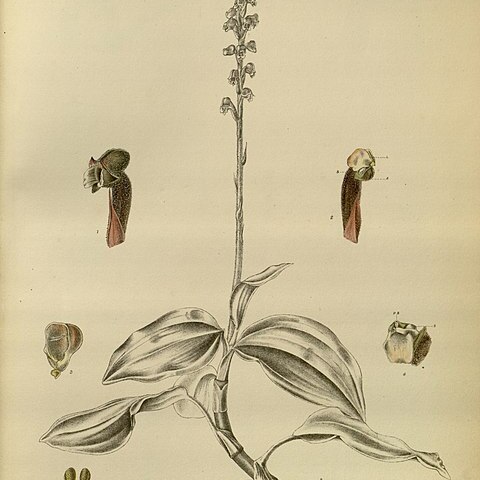Terrestrial herbs up to 60 cm. high when flowering, not very rigid, with very slender creeping rhizomatous rootstock, often decumbent at base. Leaves variously arranged along stem, frequently with a long petiole arising from the persistent sheathing base, lanceolate, glabrous, soft, thin, varying shades of green. Inflorescence many-flowered. Flowers usually non-resupinate, less than 1 cm. long. Dorsal sepal and petals forming a hood; lateral sepals enclosing the saccate base of lip. Lip concave, shallow, narrowed towards apex, basal part containing various glands and papillae. Column short, nearly as broad as long, with 2 parallel wing-like keels on the front; anther short; rostellum short and acute, or elongate, or linear-spathulate and obtuse; stigmas 2, convex, occasionally close together.
Deciduous, shade-loving, terrestrial orchids with creeping, above-ground stems. Leaves petiolate, relatively narrow, thin-textured, in a loose, ascending rosette, lower leaves withering as flowering begins. Inflorescence terminal on a stem, spicate, thin, hairy. Flowers non-resupinate (upside-down, but sometimes partially twisted), relatively small, hairy externally, dull-coloured, often not opening widely. Dorsal sepal free, overlapping base of petals, decurved below column. Lateral sepals free, porrect. Petals free, projected forwards close to labellum. Labellum unlobed or obscurely lobed, glabrous, with 2 groups of small calli in sac-like basal pouch. Pollinia 4, attached via caudicle to elongated viscidium.

